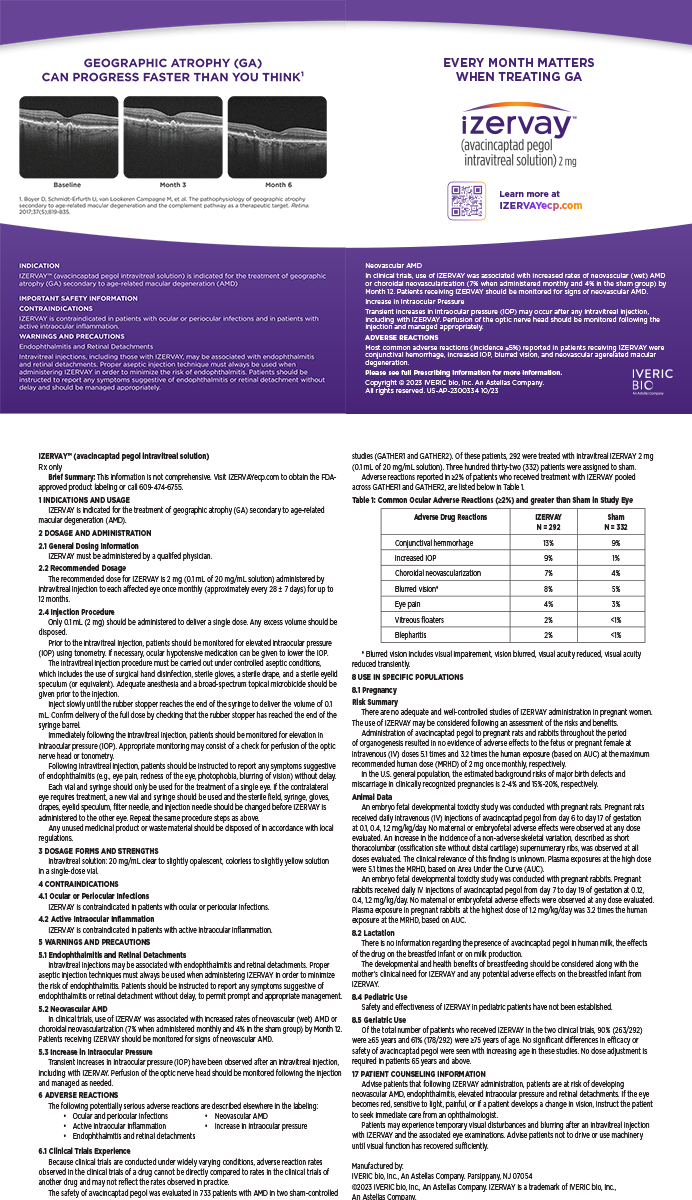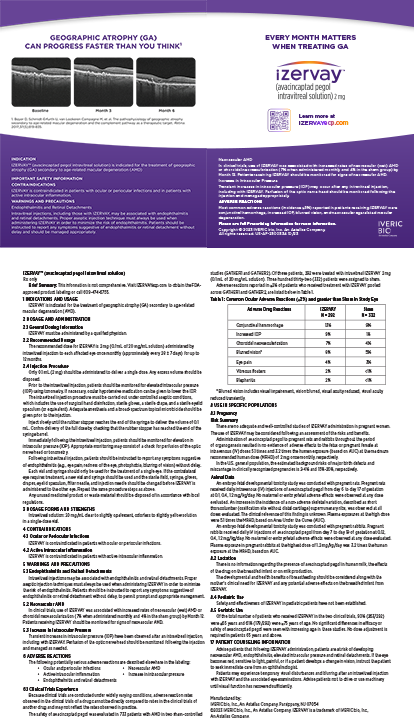A recent cataract surgery case illustrates the benefits of a new dispersive ophthalmic viscosurgical device (OVD) in complicated cases.
CASE PRESENTATION
A 62-year-old man had a long history of substance abuse and repeated trauma to his left eye. When I saw him, he had a completely opaque white cataract and light perception vision. The fellow eye had a very mild cataract. The IOP was normal in both eyes.
Unable to visualize the posterior pole, I could not use advanced biometric testing. The B-scan ultrasound was normal. There was no obvious phacodonesis, but I suspected zonular instability. I therefore opted to use a combination of cohesive and dispersive OVDs (Healon and Healon EndoCoat, both from Abbott Medical Optics Inc.). Another possible combination would have been DisCoVisc and Viscoat (both from Alcon Laboratories, Inc.).
The primary purpose of a dispersive OVD is to protect the iris, corneal endothelium, and other ocular structures from the turbulence associated with phaco energy and fluidics. Further, the maintenance of the chamber’s stability and clarity throughout cataract surgery is required.
TECHNIQUE
Using the WhiteStar Signature System for phacoemulsification with Ellips FX and FusionFluidics (all products from Abbott Medical Optics Inc.), I began the case wtih the peristaltic vacuum mode to take advantage of its lower flow preocclusion, rapid vacuum rise, and excellent holdability. Once I cleaved the nucleus, I immediately switched to venturi mode. I found a much denser cataract than I had expected, including a leathery posterior plate; the Ellips FX permitted a power setting shift on the fly. Using venturi fluidics, I can extend my reach into the anterior chamber while maintaining the phaco needle in a safe zone in the very center of the pupil. I find this feature extremely helpful in traumatic cases like this one, where there is added uncertainty about the integrity of the zonules and the risk of vitreous prolapse.
In the accompanying video, the impressive retentive characteristics of the dispersive OVD are evident. A bubble of Healon EndoCoat just inside the incision remains in place throughout the entire surgical procedure until cortical removal. The sodium hyaluronate material is absolutely clear, a property I find to be superior to the performance of other dispersive OVDs. In this case, it took some time before I could obtain a red reflex, so any distortion of the surgical view by the OVD would have been undesirable.
I was also able to use the dispersive agent for viscodissection to facilitate the segments’ removal. I inserted the OVD into the interface of the chopped nucleus to spread the cataract and create space so that I might more freely access and remove the segments.
OUTCOME
This patient ended up with a UCVA of 20/25+2, a quiet eye, and no rise in IOP. I give significant credit for this result to the combined viscoelastics and to the advanced phaco system that allowed me to adjust phaco power and pump style as needed.
I have found Healon EndoCoat to be an excellent tool in many other complicated surgical situations, including Fuchs dystrophy, pseudoexfoliation, and intraoperative floppy iris syndrome. In the last situation, for example, I can lay the dispersive OVD against the iris sphincter, where the viscoelastic serves as a cushion to keep the iris undisturbed and quiet. This step reduces the need for iris retaining devices.1
Challenges with dispersive OVDs
The advantage of dispersive OVDs—their retentiveness— can become a problem when they must be removed from the eye. The surgeon must always be concerned about IOP spikes from a retained OVD.
The studies that led to the FDA’s approval of Healon EndoCoat demonstrated that it was not inferior to Viscoat in terms of the rate of IOP spikes.2 My research using a new technique to insert and remove an OVD when a dispersive is used in combination with a cohesive has also shown no statistically significant difference in IOP spikes postoperatively. A study that I presented at this year’s ASCRS meeting, performed in eyes with intraoperative floppy iris syndrome, compared IOP 4 to 6 hours postoperatively in cases using Healon alone with those that used Healon in combination with Healon EndoCoat. There was no difference in IOP.1
I use a lasso technique to assist with the removal of dispersive OVDs. At the beginning of the case, I put a small bead of cohesive viscoelastic in a ring around the extreme periphery of the anterior chamber, against the trabecular meshwork. At the conclusion of the case, after removing most of the dispersive agent, I pull out the Healon, which, due to it cohesive nature, comes out like a rope or lasso. As it emerges in a single strand, the lasso captures and pulls out any retained particles of the dispersive OVD or residual cortical remnants, clearing the meshwork and reducing IOP spikes.
Dispersive OVDs also require more pressure during injection than cohesive agents, which can sometimes cause the cannula to detach from the syringe. In particular, I like the 25-gauge cannula that is provided with Healon EndoCoat, because it is excellent for microincisional cataract surgery. This instrument eases the injection of the OVD through the primary incision or paracentesis and has a snap-on, clear-locking device that increases safety without affecting my visualization of the plunger. Healon EndoCoat does not require refrigeration, making it convenient to keep on hand in the OR for cases that turn out to be more complicated than anticipated, so it can be accessed easily.
CONCLUSION
The combination of a dispersive and a cohesive OVD is an essential tool for complicated surgical cases. The newest such offering, Healon EndoCoat, allows me to provide patients with excellent postoperative results despite complicated situations.
Donald R. Nixon, MD, FRCSC, DipABO, is an assistant professor at the Northern Ontario School of Medicine in Thunder Bay, Ontario, Canada. He is a consultant to Abbott Medical Optics Inc. but states that he holds no financial interest in the products or techniques mentioned herein. Dr. Nixon may be reached at (705) 325-0722; trimedeyedoc@gmail.com.
- Nixon, DR. Surgical performance of new dispersive OVD in cases of IFIS. Paper presented at: ASCRS/ASOA Symposium and Congress; April 23, 2012; Chicago, IL. 2. Healon EndoCoat Dispersive OVD [package insert]. Santa Ana, CA: Abbott Medical Optics, Inc.; 2012.


